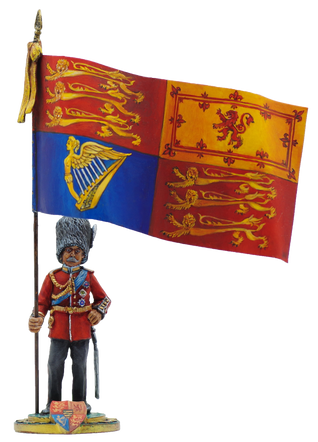
Prince Arthur
Duke of Connaught and Strathearn
Prince Arthur, Duke of Connaught and Strathearn (Arthur William Patrick Albert; 1 May 1850 – 16 January 1942) was the seventh child and third son of Queen Victoria of the United Kingdom and Prince Albert of Saxe-Coburg and Gotha. He served as Governor General of Canada, the tenth since Canadian Confederation and the only British prince to do so. Arthur was educated by private tutors before entering the Royal Military Academy at Woolwich at 16 years old. Upon graduation, he was commissioned as a lieutenant in the British Army, where he served for some 40 years, seeing service in various parts of the British Empire. During this time, he was also created a royal duke, becoming Duke of Connaught and Strathearn as well as Earl of Sussex. In 1900, he was appointed as Commander-in-Chief, Ireland, which he regretted; his preference was to join the campaign against the Boers in South Africa. In 1911, he was appointed as Governor General of Canada, replacing Albert Grey, 4th Earl Grey, as viceroy. He occupied this post until he was succeeded by Victor Cavendish, 9th Duke of Devonshire, in 1916. He acted as the King's, and thus the Canadian Commander-in-Chief's, representative through the first years of the First World War. After the end of his viceregal tenure, Arthur returned to the United Kingdom and performed various royal duties there and in Ireland, while also again taking up military duties. Though he retired from public life in 1928, he continued to make

his presence known in the army well into the Second World War, before his death in 1942. He was Queen Victoria's last surviving son.

The Grenadier Guards is the most senior infantry regiment of the British Army, being at the top of the Infantry Order of Precedence. It can trace its lineage back to 1656 when Lord Wentworth's Regiment was raised in Bruges to protect the exiled Charles II. In 1665, this regiment was combined with John Russell's Regiment of Guards to form the current regiment, known as the 1st Regiment of Foot Guards. Since then, the regiment has filled both a ceremonial and protective role as well as an operational one. In 1900, the regiment provided a cadre of personnel to form the Irish Guards; while later, in 1915 it also provided the basis of the Welsh Guards upon their formation. The regiment's early history saw it take part in numerous conflicts including the War of the Spanish Succession, the War of the Austrian Succession, the Seven Years' War, and the Napoleonic Wars; at the end of this period the regiment was granted the "Grenadier" designation by a Royal Proclamation. During the Victorian era, the regiment took part in the Crimean War, the Anglo-Egyptian War, the Mahdist War, and the Second Boer War.

The House of Saxe-Coburg and Gotha (German: Haus Sachsen-Coburg und Gotha) is a European royal house. It takes its name from its oldest domain, the Ernestine duchy of Saxe-Coburg and Gotha, and its members later sat on the thrones of Belgium, Bulgaria, Portugal, and the United Kingdom and its dominions. Founded in 1826 by Ernest Anton, the sixth duke of Saxe-Coburg-Saalfeld, it is a cadet branch of the Saxon House of Wettin. One agnatic branch currently reigns in Belgium—the descendants of Leopold I — and another reigned until the death of Elizabeth II in the United Kingdom—the descendants of Albert, Prince Consort. The British line was founded by King Edward VII, eldest son of Queen Victoria and Prince Albert of Saxe-Coburg and Gotha. His successor and son, King George V, changed the name of this line of the royal house and family to Windsor.

Royal Standard of the United Kingdom. The royal standards of the United Kingdom refer to either of two similar flags used by King in his capacity as sovereign of the United Kingdom. Two versions of the flag exist, one for use within Scotland and the other for use elsewhere. Although almost universally called a standard, such flags when used in the United Kingdom are banners of arms, as they comprise the shield of the royal arms. In England, Northern Ireland, Wales, the Crown dependencies and the British Overseas Territories, the flag is divided into four quadrants. The first and fourth quadrants represent the ancient Kingdom of England and contain three gold lions (or "leopards"), passant guardant on a red field; the second quadrant represents the ancient Kingdom of Scotland and contains a red lion rampant on a gold field; the third quadrant represents the ancient Kingdom of Ireland and contains a version of the gold harp from the coat of arms of Ireland on a blue field.
Awards: Sash and star of the Most Noble Order of the Garter, Stars of the Most Ancient and Most Noble Order of the Thistle and the Most Illustrious Order of Saint Patrick.










